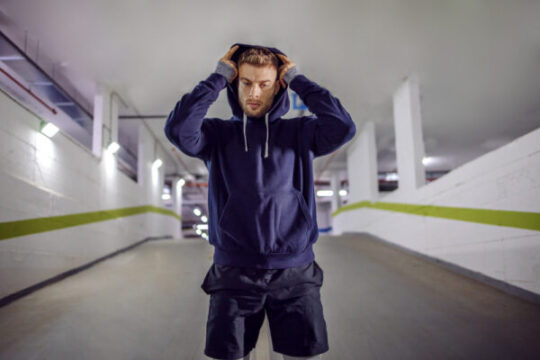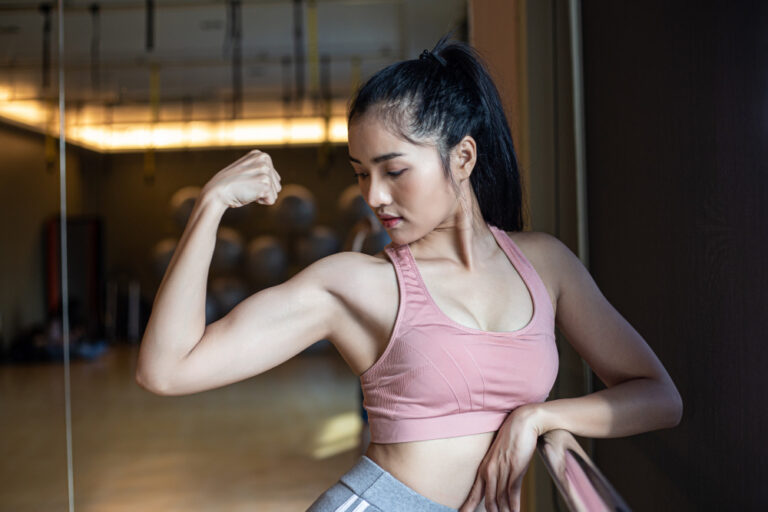Should I Maintain My Sweatshirt on While Working out? Layering Up While Exercising, Clarified
Introduction
When it comes to hitting the gym or going for a run, deciding what to wear can sometimes be a puzzle. One common question that often arises is whether it’s beneficial to keep that sweatshirt on while working out. Does layering up enhance your performance or hinder it? In this comprehensive guide, we’ll delve into the topic “Should I Maintain My Sweatshirt on While Working out? Layering Up While Exercising, Clarified” and provide you with all the insights you need to make an informed decision about your workout attire.

Should I Maintain My Sweatshirt on While Working out? Layering Up While Exercising, Clarified
Before we dive into the details, let’s address the core question: Should you keep your sweatshirt on while working out? The answer isn’t as straightforward as a simple yes or no. It depends on several factors, including the type of workout, the environment, and your personal comfort level.
The Benefits of Layering Up
Layering up with a sweatshirt during your workout can offer some benefits, especially in certain situations:
- Warm-Up Assistance: Wearing a sweatshirt during your warm-up can help you raise your body temperature more quickly, leading to improved blood circulation and muscle flexibility.
- Sweat Regulation: Sweatshirts can help your body regulate its temperature by trapping heat close to your skin. This can be particularly helpful during outdoor workouts in colder weather.
- Psychological Comfort: For some individuals, wearing a sweatshirt can provide a psychological sense of security and motivation, boosting confidence and focus during the workout.

The Downsides of Layering Up
However, there are also downsides to consider:
- Overheating Risk: Layering up excessively can lead to overheating, especially during intense workouts. This can result in discomfort, dizziness, and even fainting.
- Restriction of Movement: A heavy sweatshirt might limit your range of motion, affecting the quality and effectiveness of your exercises, particularly those that require flexibility.
- Dehydration Concerns: Excessive sweating due to layering up can increase the risk of dehydration if you don’t stay adequately hydrated during your workout.
Factors to Consider
To decide whether to maintain your sweatshirt on while working out, consider these factors:
- Workout Intensity: High-intensity workouts generate more heat naturally. Adding layers might not be necessary and could lead to overheating.
- Environmental Conditions: If you’re exercising outdoors in colder weather, layering up can be a good idea. In contrast, in a well-ventilated gym, you might not need the extra warmth.
- Personal Comfort: Everyone’s comfort level varies. Some people thrive in warmer conditions, while others prefer cooler surroundings.
FAQs About Layering Up While Exercising
Q: Does wearing a sweatshirt help burn more calories? A: Wearing a sweatshirt can make you sweat more, but the extra calories burned are minimal and not significant for weight loss.
Q: Can layering up improve muscle growth? A: While layering up can increase body temperature, which might aid blood flow, the impact on muscle growth is minor compared to proper nutrition and exercise.
Q: Should I wear a sweatshirt during cardio workouts? A: It’s generally not recommended for cardio workouts, as overheating can negatively affect your performance and potentially be unsafe.
Q: Are there specific types of workouts where layering is beneficial? A: Layering can be more useful for outdoor activities in cold weather or during warm-up sessions rather than for high-intensity workouts.
Q: How can I prevent overheating while layering up? A: Choose lightweight, breathable fabrics for your workout attire. Stay hydrated and take breaks if you start feeling too hot.
Q: Is it better to layer with moisture-wicking fabrics? A: Yes, moisture-wicking fabrics can help regulate body temperature and prevent excessive sweating, enhancing overall comfort during your workout.
Conclusion
Ultimately, the decision of whether to maintain your sweatshirt on while working out depends on various factors, including the type of exercise, your personal comfort, and the environmental conditions. While layering up can offer benefits like aiding warm-ups and providing a psychological boost, it’s essential to strike a balance to prevent overheating and restricted movement. Listen to your body, prioritize comfort, and adjust your workout attire accordingly for a safe and effective exercise session.
Remember, there’s no one-size-fits-all answer, and it’s essential to find what works best for you. Whether you choose to layer up or not, focus on staying active, hydrated, and comfortable to get the most out of your workouts.







